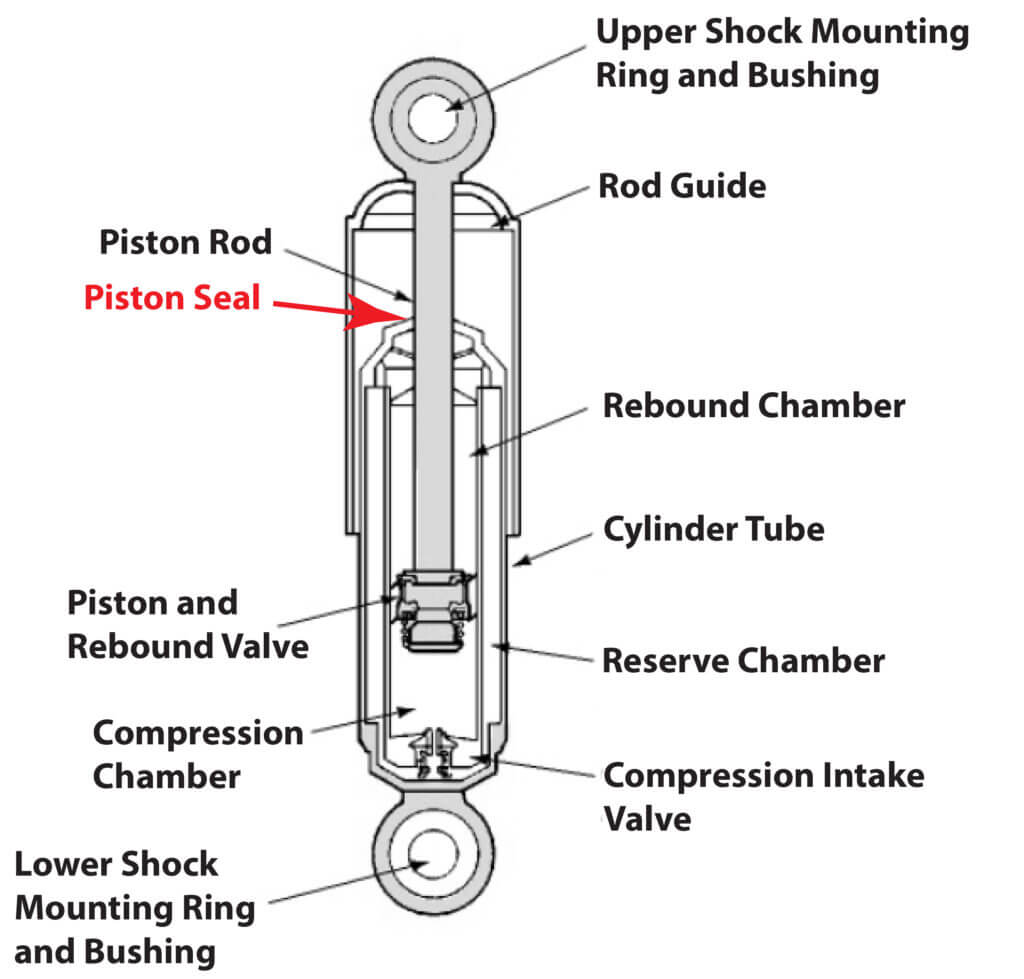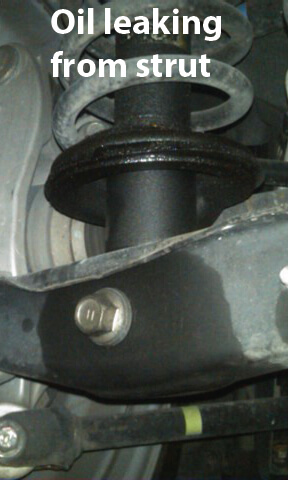Strut Leakage versus Weepage: Understanding the Difference
Learn the Difference Between Strut Leakage and Weepage
All struts and shocks contain oil and nitrogen. The oil is retained in the strut by a tight wiper seal (see image below) located at the top of the unit. The highly finished piston pushes in and out of the wiper seal on every bump, so it’s not surprising that the piston carries microscopic amount of oil and nitrogen out of the unit. Over time, that small amount of oil collects at the top of the piston, appearing as an oilly spot. The manufacturers call that strut weepage. It might even appear as if it was once wet but has dried up.

Now, here’s the important part: a weep is not a leak and it’s not a reason to replace your strut or shock. As long as the strut is performing its job—providing a smooth ride and handling the vehicle’s suspension properly—you don’t need to panic. A weep doesn’t indicate failure; it’s just a minor sign of wear, and the strut still has life left in it. For more information on shocks and struts, see this article at Brake and Front End magazine.
However, a leaking strut is a different story entirely. If your strut is leaking—meaning oil is actively escaping at a rate that affects performance—that’s a failure. A leaking strut no longer functions properly. It can’t effectively dampen the oscillations of your springs or maintain proper contact between your tires and the road. This compromises safety, as it can lead to longer stopping distances and reduced control of your vehicle.
What causes struts to leak?
Strut leaks typically happen when dirt or debris accumulates around the piston seal. The piston’s movement pushes this grit into the seal, which wears it down over time. At first, this wear might only result in a weep, but eventually, it can lead to a full-blown leak. Once that happens, the strut’s ability to function is compromised, and it must be replaced.
Can I keep driving on a leaking strut?
No. Once a strut is leaking, it’s no longer effective at controlling the vehicle’s suspension.
A leaking strut can increase your stopping distance by as much as 12 feet from 60 MPH, which is a serious safety concern. A failed strut means less control over your vehicle, and that’s something you can’t afford. Get it replaced as soon as possible if you notice a leak.
Get it replaced as soon as possible.
See this post on when to replace shocks and struts
©, 2020 Rick Muscoplat
Posted on by Rick Muscoplat


